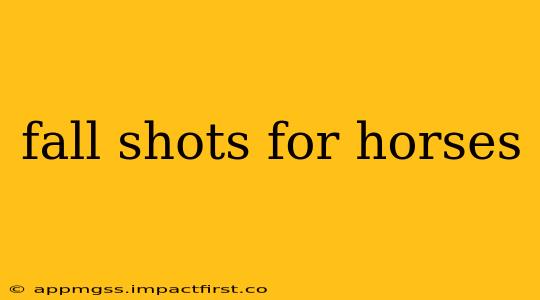Autumn's arrival paints the landscape in breathtaking hues of gold, crimson, and russet, providing a magical backdrop for equine photography. Whether you're a professional photographer seeking inspiration or a horse enthusiast looking to capture the beauty of your own equine companion, this guide will help you achieve stunning fall shots of horses. From choosing the perfect location to mastering lighting and composition, we'll explore the essential techniques for creating unforgettable images.
What is the best time of day for taking photos of horses in the fall?
The best time for capturing fall photos of horses is during the golden hour, which occurs shortly after sunrise and before sunset. During this period, the low-angled sunlight casts a warm, golden glow, creating long shadows and illuminating the horse's coat with a beautiful, ethereal quality. The soft light also minimizes harsh shadows on the horse's face, resulting in more flattering and detailed images. Experiment with shooting during the blue hour (the time just before sunrise or after sunset) for a more moody and atmospheric effect.
What are some good locations to take fall photos of horses?
The possibilities are endless! Consider these locations for stunning fall equine photography:
- Leaf-strewn fields: The vibrant colors of fallen leaves create a picturesque setting. Look for fields with a variety of autumnal hues.
- Wooded areas: The interplay of sunlight filtering through the colorful leaves can create a magical atmosphere. Choose a location with interesting textures and varied light.
- Apple orchards: The combination of horses and ripe apples offers a charming and rustic appeal.
- Vineyards: The autumn colors of the grapevines provide a stunning backdrop.
- Near a lake or river: The reflection of the fall foliage on the water adds depth and beauty to your images.
Remember to consider safety when choosing your location. Ensure the area is suitable for both horses and photography equipment.
What equipment do I need to take good fall photos of horses?
While you can capture beautiful images with a smartphone, investing in a DSLR or mirrorless camera will significantly improve your results. Here's some essential equipment:
- Camera: A DSLR or mirrorless camera with interchangeable lenses.
- Lens: A telephoto lens (70-200mm or longer) is ideal for capturing detailed shots of horses from a distance, while a wide-angle lens can capture the surrounding landscape.
- Tripod: A sturdy tripod is essential for sharp images, especially in low light conditions.
- Remote shutter release: This prevents camera shake when taking long exposures.
What are some tips for posing horses for fall photos?
Horses are naturally majestic creatures, but a little guidance can enhance your photos. Try these posing tips:
- Natural poses: Encourage natural movement and behavior. A horse grazing peacefully or walking calmly can create stunning images.
- Dynamic poses: Capture action shots like running or cantering through the leaves.
- Utilize the environment: Incorporate the autumn foliage into the composition, placing the horse amongst the trees or leaves.
- Interact with the horse: Gentle interaction with the horse, such as stroking its mane or neck, can create a sense of connection and intimacy.
How can I edit my fall horse photos?
Post-processing can significantly enhance your fall horse photos. Consider these editing techniques:
- Color correction: Adjust the white balance to achieve accurate and vibrant colors.
- Contrast and sharpness: Enhance the contrast and sharpness to bring out details in the horse's coat and the autumn foliage.
- Selective editing: Use tools to enhance specific areas of the image, such as the horse's eyes or the surrounding landscape. Avoid over-editing.
By following these tips and techniques, you can capture breathtaking fall shots of horses that truly capture the beauty and spirit of the season. Remember to prioritize the horse's safety and well-being throughout the photoshoot. Happy shooting!
